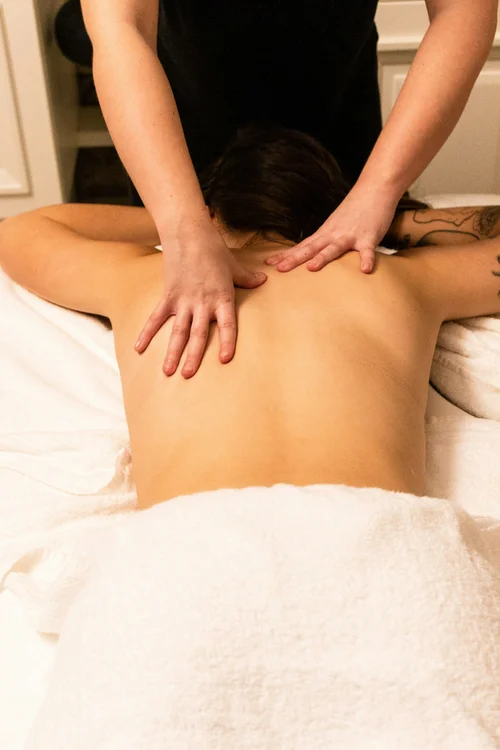Unlocking the Power of Myofascial Release: A Comprehensive Guide to Healing
Imagine waking up one morning with a tightness in your back that seems to echo through your entire body. This discomfort can be debilitating, making even the simplest tasks feel insurmountable. Many people experience similar physical challenges, often leading them to seek solutions that offer relief and restoration. One approach gaining recognition for its effectiveness is Myofascial Release Massage. This technique not only alleviates pain but also promotes overall well-being by addressing the underlying causes of discomfort.

Understanding Myofascial Release Massage
At its core, Myofascial Release Massage focuses on the fascia, the connective tissue that surrounds muscles and organs throughout the body. This tissue can become restricted due to various factors, including stress, injury, or poor posture. Such restrictions can lead to chronic pain and tension. By applying gentle, sustained pressure, this therapy aims to release these restrictions, allowing for improved mobility and reduced discomfort. The significance of this therapy lies in its holistic approach, emphasizing the connection between physical and emotional health.
Many people are unaware that their pain may stem from fascial restrictions. This is where Myofascial Release Massage can make a substantial difference. By promoting blood flow and enhancing circulation within the tissues, this technique facilitates healing and recovery. As the fascia is released, individuals often experience a profound sense of relaxation and relief, which can lead to better overall health. This process not only addresses pain but also supports the body’s innate ability to heal itself.
The Techniques Behind Myofascial Release
The techniques used in Myofascial Release Massage are both gentle and profound. Therapists typically use their hands to apply pressure on specific areas of the body, working to locate and release tight spots. This hands-on approach allows for a deep connection between the therapist and client, fostering an environment of trust and healing. The uniqueness of this method lies in its ability to adapt to the individual's needs, making it suitable for a wide range of conditions, from sports injuries to chronic pain syndromes.
As the session progresses, clients may notice changes in their body’s response. The therapist may incorporate various techniques, such as stretching and mobilization, to further enhance the release process. This adaptability is crucial, as it acknowledges that each person’s body is different. The primary goal remains consistent: to alleviate discomfort and restore balance within the body. Through these methods, Myofascial Release Therapy becomes a powerful ally in the journey toward physical wellness.
Exploring Myofascial Release Therapy
Transitioning to Myofascial Release Therapy, it is essential to recognize its broader application beyond massage. This therapy can be integrated into various treatment plans to address pain and dysfunction. Unlike traditional massage, which often focuses on muscle relaxation, Myofascial Release Therapy dives deeper into the fascial system. This distinction is vital, as it enables practitioners to target chronic pain more effectively, leading to long-lasting relief.
One of the most significant benefits of Myofascial Release Therapy is its ability to foster a deeper understanding of one's body. Clients often report an increased awareness of how tension manifests in different areas. This awareness can empower individuals to take an active role in their healing process. By recognizing patterns of tension and stress, they can make informed choices about their health and well-being. This therapeutic journey is not just about alleviating pain; it is about cultivating a healthier relationship with the body.

The Impact of Myofascial Release on Overall Health
The effects of Myofascial Release Therapy extend beyond immediate pain relief. Regular sessions can lead to significant improvements in overall health, including better posture, enhanced flexibility, and increased energy levels. As the body learns to move more freely, individuals often find that their daily activities become easier and more enjoyable. This newfound freedom can transform lives, enabling people to engage in hobbies, exercise, and social interactions without the limitations imposed by pain.
Moreover, the emotional benefits of Myofascial Release Therapy should not be overlooked. Many clients report feeling more relaxed, balanced, and centered after sessions. This emotional release can be as crucial as physical relief, highlighting the interconnected nature of body and mind. By addressing both aspects, this therapy promotes holistic healing, allowing individuals to thrive in their everyday lives.
Conclusion
Myofascial Release Massage and Myofascial Release Therapy offer powerful tools for addressing pain and promoting wellness. By focusing on the fascial system, these techniques facilitate healing and empower individuals to take charge of their health. As people incorporate these therapies into their lives, they often discover a profound sense of relief and well-being. For those interested in exploring these benefits further, visiting wakingspace.org can provide valuable resources and guidance on this transformative journey. Embracing Myofascial Release may just be the key to unlocking a healthier, more vibrant life.

Comments
Post a Comment